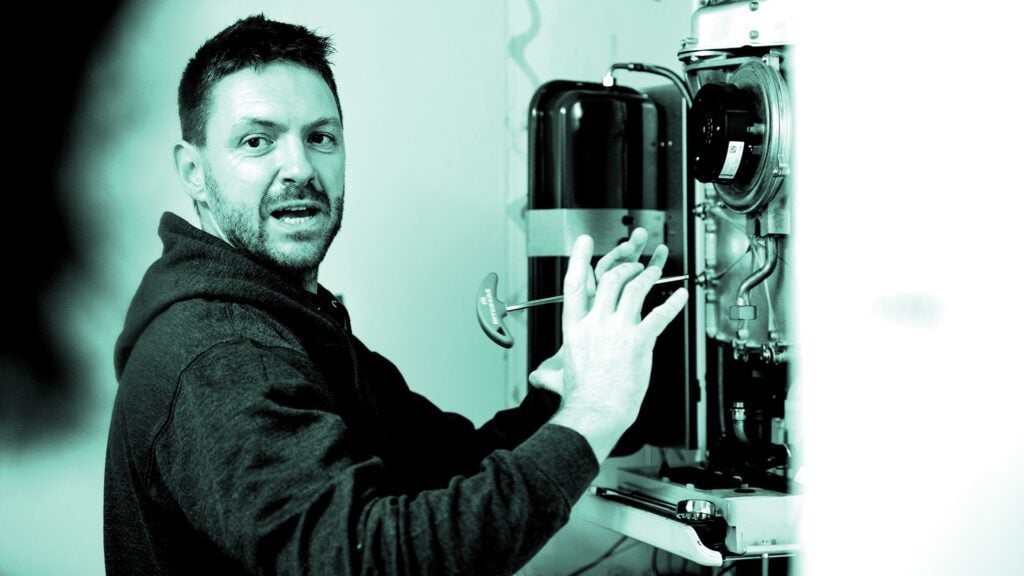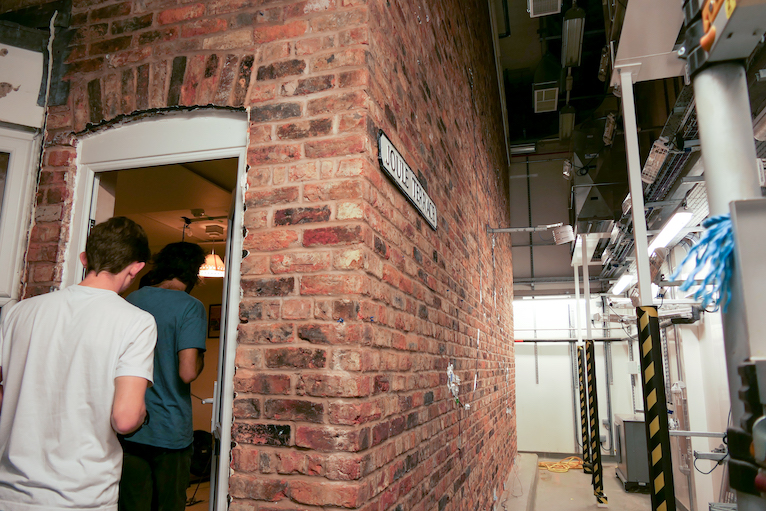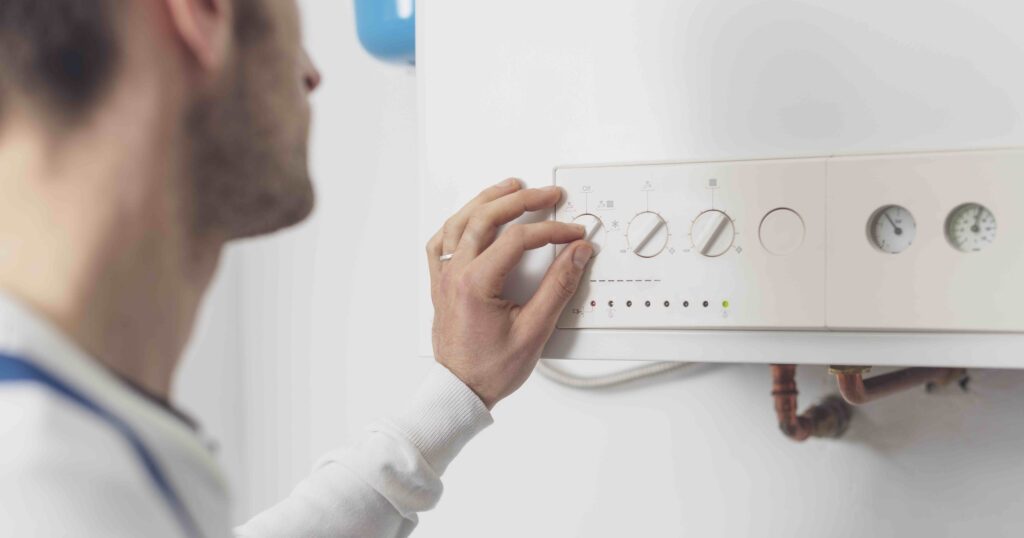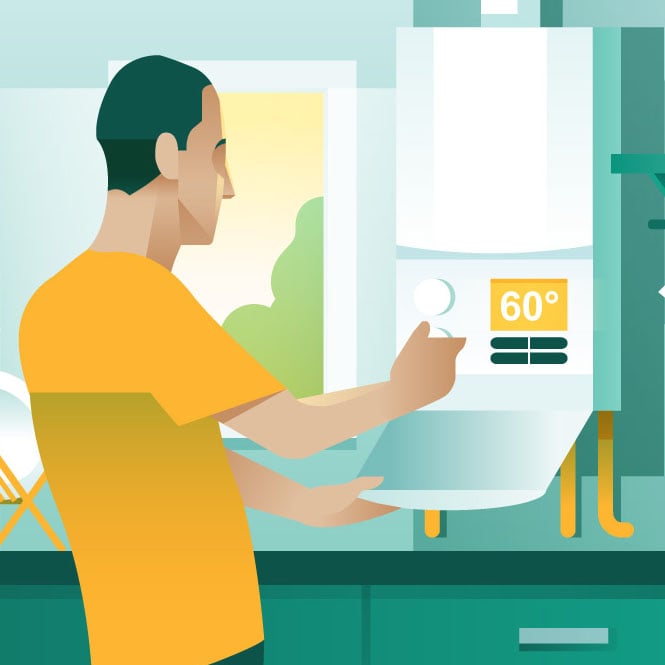House call: how we used a testing lab in Salford to identify the effects of changing boiler flow temperatures

21 December 2022
As part of Nesta’s mission to decarbonise home heating in the UK, we’re investigating the barriers to, and impacts of, households lowering the flow temperature of their condensing combi boilers – the temperature to which boilers heat the water that gets sent to our radiators.
One of the barriers to households lowering their boiler flow temperature was not knowing if changing their boiler settings would save them money. We wanted to find a way to measure the impact that changing boiler flow temperature could have in a real “home” environment. Enter The Energy House. From the outside, The Energy House at the University of Salford more closely resembles an industrial warehouse. Once inside however, you’ll find a state-of-the-art research and testing laboratory. Within an environmental chamber in the lab is a replica of an early 20th-century terraced house.

Complete with solid brick walls, suspended timber floors and single-glazed windows, the replica is a traditionally built, two-bedroom house with a conventional “wet” central heating system fired by a gas boiler.
Throughout the chamber and the house there are over 200 monitoring points with real-time data collection of temperature, humidity, heat flux, electricity and gas consumption. Testing in this environment allows for accurate and rapid assessment, making it ideal to simulate the effects of turning your boiler flow temperature up or down on a home that would be familiar to many of us living in the UK.

Our research at The Energy House measured the impact of reducing the flow temperature of a domestic gas condensing combi boiler at whole-house level, under controlled conditions. We set the thermostat to 21°C in the living room and adjusted thermostatic radiator valves to limit the temperature to roughly 18°C in all other rooms. We then varied the boiler flow temperature between 80°C and 50°C to assess the difference in gas use at different temperatures.
Not only could we test the impact that boiler temperature may have in standard conditions, but within the environmental chamber we could simulate a range of weather and temperature conditions, from wind, rain and snow to sun. Thanks to the adjustable environment, we were able to conduct a series of tests with outdoor temperatures of 4.5°C, to simulate average UK winter temperatures.
The study found that reducing the boiler flow temperature from 80°C to 60°C used 12% less gas to heat the Energy House for the same amount of time. This was primarily due to improved boiler efficiency, rather than reductions in internal air temperature (although the house did take a few minutes longer to warm up in the morning and evening). Assuming that 75% of home gas consumption is used for space heating – and the remainder for hot water and cooking – this would translate to a 9% saving on overall gas bills.
The full findings of this research are set out in the Salford Energy House report. To read a summary of that and other evidence, see Money Saving Boiler Challenge: Supporting evidence.
Nesta’s Money Saving Boiler Challenge encourages households to lower the flow temperature on their condensing combi boilers to 60°C. You can use our simple step-by-step tool to make this change.

This step-by-step guide walks you through changing your boiler flow temperature
It’s quick, free and easy to do. It can be changed back instantly if necessary so there’s nothing to lose by trying it.

